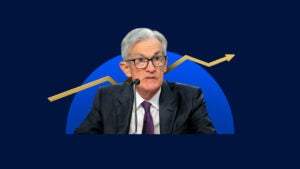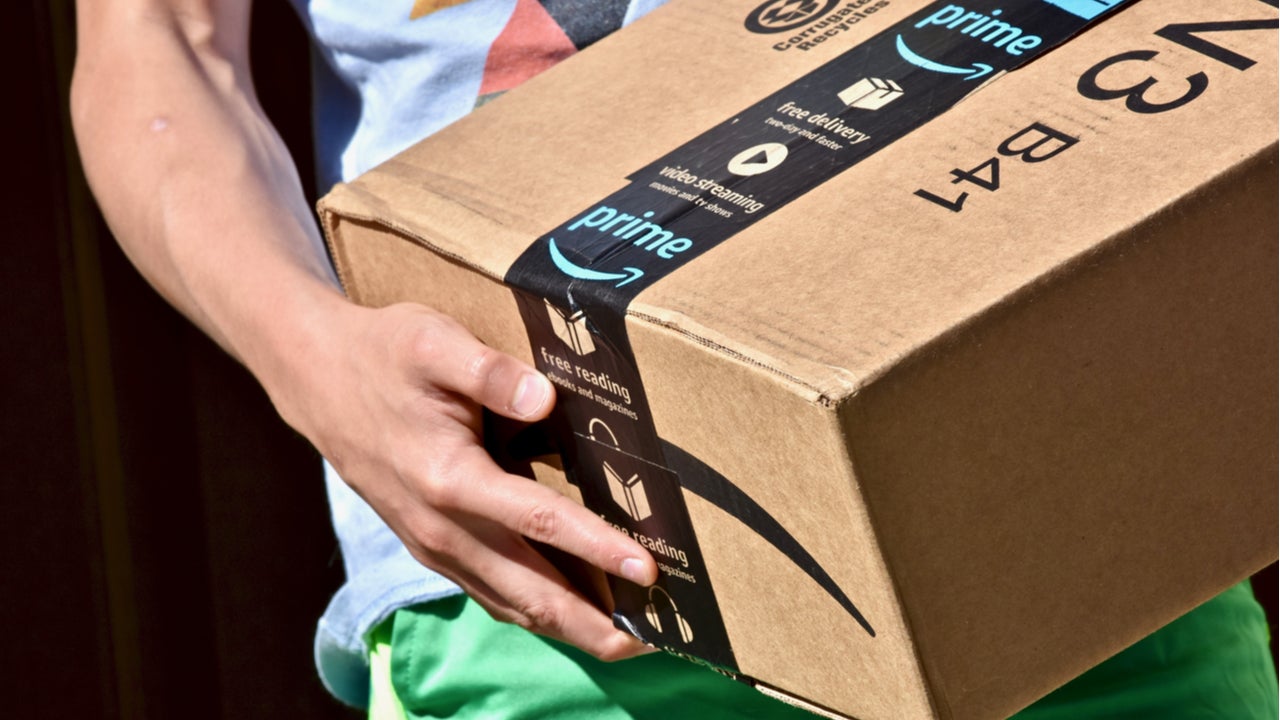Why gold at Costco is a terrible investment and what to buy instead

Popular retailer Costco is now hawking gold ingots to its millions of club members, and they’ve been flying off the shelves, according to the company. But while the shiny yellow metal may make a great conversation piece or an interesting piece of art, it’s a pretty awful investment.
Here are the details on Costco’s deal – and what a legendary investor says you should buy instead. Plus, we’ll talk about the best way to buy gold.
3 reasons why Costco’s gold is a bad investment
Costco is selling gold ingots – two types actually – priced at $2,070 (as of mid-December). While much of the financial press is using the term “bar” to describe the gold – the word conjures images of Hollywood capers with brick-size hunks of the shiny stuff – “ingot” might be the better term here. For a couple grand, you’re buying all of one ounce of gold – fitting easily in your hand.
The company is selling the ingots online-only, not through stores, a nod certainly to the riskiness – to customers and itself – of moving so much value around in a small item. Regardless, they’re selling out within hours of posting or reposting the ingots for sale, says the company.
Naturally, Costco’s great reputation can make it easier for those on the fence about buying gold. The retailer has made a commitment to fixed mark-ups on its prices, and consumers may even be able to shave a few percent off the price of the gold ingots via cash-back credit cards.
But despite the solid buying experience, gold is a bad investment for a variety of key reasons.
1. It can be impossible to get fair value
When you’re dealing with physical bullion, it’s hard not to get worked over by the dealer you’re buying or selling from. Gold dealers have to build in their own pricing margins because they’re not out here risking money for fun. That means you’re going to pay more than the spot price of gold when you buy and receive less when you sell. Just like when you sell your old car to a car dealer, they’re building in their future profit to the next buyer, not simply buying to use the car.
“With this event, which has garnered a lot of attention, the people who are probably most likely to generate a positive return are the sellers of the gold to Costco and Costco itself,” says Mark Hamrick, senior economic analyst, Bankrate.
Every time you enter or leave the market for physical gold, you’re paying a significant “spread mark-up” for the privilege of doing so, getting clipped on both sides of the transaction.
The spread is evident in Costco’s pricing. With the spot price of gold at $2,018 in mid-December, its gold ingots cost about 3 percent more than the fair, market-determined value of gold. But late last year this spread had been as much as 7.3 percent higher. And when you sell your gold, you’ll likely have to settle for a similar discount or more.
You’ll be better off if you work with a reputable bullion dealer rather than a pawn shop, and you don’t want to be in any hurry to sell, since that will tend to lower your final realized price as well.
People rightly squawk when they pay similarly huge commissions in other contexts, such as the 5 or 6 percent when selling a home. The thing is, commissions on major investment products such as stocks, ETFs and mutual funds are now down to zero. If you want to see how to get fair value for your gold, continue reading below.
2. Gold has lackluster returns over time
If you’re buying gold because you expect to get rich, just stop today. The returns on gold pale in comparison to those on stocks or stock funds over time. While gold may outperform over periods of time, the performance of stocks has been vastly superior – here are the numbers.
Below are the key performance figures for two prominent ETFs: SPDR Gold Shares (GLD), which owns physical gold, and the Vanguard S&P 500 ETF (VOO), which tracks the Standard & Poor’s 500 index of America’s largest companies.
| Fund | 1 year | 3 year | 5 year | 10 year | 15 year |
|---|---|---|---|---|---|
| Source: Morningstar, annualized return percentage (net asset value), as of Jan. 5, 2024 | |||||
| SPDR Gold Shares | 9.6% | 1.3% | 9.3% | 4.7% | 5.4% |
| Vanguard S&P 500 ETF | 23.8% | 9.9% | 15.0% | 11.9% | 13.9% |
Over every single period cited, the S&P 500 index fund outperforms the gold fund, which was created to track the price of gold by actually owning physical bullion. In other words, it’s not some fancy gimmicked security that owns something else that’s supposed to move like gold.
And the long-term returns are what we’re really after, since anything – Beanie Babies, baseball cards, cryptocurrency – can outperform over short periods of time. On that basis, the S&P 500 index fund has racked up average annual returns of 13.9 percent against the gold fund’s 5.4 percent over the 15-year period.
The thing is, the disparity becomes even more stark when you do the math to see what this means in actual dollar terms. If you had invested $10,000 in each fund and held for the whole 15-year period, here’s how much money you’d have before taxes:
- SPDR Gold Shares – $22,009
- Vanguard S&P 500 ETF – $70,446
That’s a massive disparity, and it’s what you’re giving up by buying physical gold. But to get a fairer measure of owning physical gold yourself (and not just through a fund), you should subtract commissions from the total value, too, perhaps 10 percent, reducing your profit further.
Run the same calculations over the 10-year period, and it would look still worse for gold. That’s not to take anything away from the SPDR fund, which we’ll applaud in the next section.
3. You have to keep gold safe
Unlike other investments such as stock or ETFs, gold has to be kept safe, and if you’re buying a lot of it, insured. In some extreme circumstances, that could cost significant amounts of money. But even if you have just your novelty ingot of gold, you need to be careful, lest a thief quickly pocket the gold and your entire investment. So it’s not something you want just lying around.
“My fear for those who are viewing gold bars as something more than an expensive collectible, which is the category I’d put it in, they risk the actual loss or theft of them, as well as the costs associated with mark-ups,” says Hamrick.
Of course, like jewelry, part of the enjoyment of owning a gold ingot is looking at its luster and even showing it off to others. It’s a fun novelty, even if a dubious investment. So what a shame that its value might make you too scared to display it and rather hide it away.
Still, if you don’t keep your gold safe, then it’s likely to eventually be swiped.
How to invest in gold and what to buy instead
For the reasons above, buying physical gold is just not that attractive of an investment. However, if you’re dead-set on investing in gold, then you do have an investment option that eliminates some of the bad points of buying bullion: SPDR Gold Shares.
Yes, if you want to wager on the price of gold rising, then a better way to do it is by buying a fund that owns physical gold. The price increases in the fund will track the rise in the commodity, minus the fund’s 0.4 percent expense ratio, which is deducted seamlessly from your fund.
Buying this kind of gold fund eliminates the difficulty of getting fair value for your gold, since you’ll be able to buy and sell the fund at the fair market price with no incremental brokerage commissions. Plus, you won’t have to pay out of pocket for keeping the gold safe, though arguably you do that implicitly through the fund’s expense ratio, though it’s reasonably low. (Plus, you have potential other investments in gold that let you win in multiple ways.)
However, a gold fund simply doesn’t solve for the key issue of gold’s subpar returns. For that, legendary investor Warren Buffett has long advocated owning shares in productive businesses rather than owning a yellow metal pulled from the ground.
“What motivates most gold purchasers is their belief that the ranks of the fearful will grow,” said Buffett in his 2011 letter to shareholders of his company Berkshire Hathaway. He added: “Meanwhile, if you own one ounce of gold for an eternity, you will still own one ounce at its end.”
Buffett has advised individual investors to purchase shares in an S&P 500 index fund and then to add to the holdings over time. By buying and holding an S&P 500 index fund, investors can enjoy the index’s returns – without having any specialized investment knowledge. This approach makes this kind of fund highly accessible for even novice investors looking for strong returns.
Here’s how to buy an S&P 500 index fund and what to look out for.
Bottom line
Those looking to find attractive returns from Costco’s sale of gold ingots should carefully understand the downsides of investing in physical gold. An investment in the S&P 500 index has provided much superior returns over time and offers investors the power of diversification, too.
Editorial Disclaimer: All investors are advised to conduct their own independent research into investment strategies before making an investment decision. In addition, investors are advised that past investment product performance is no guarantee of future price appreciation.






